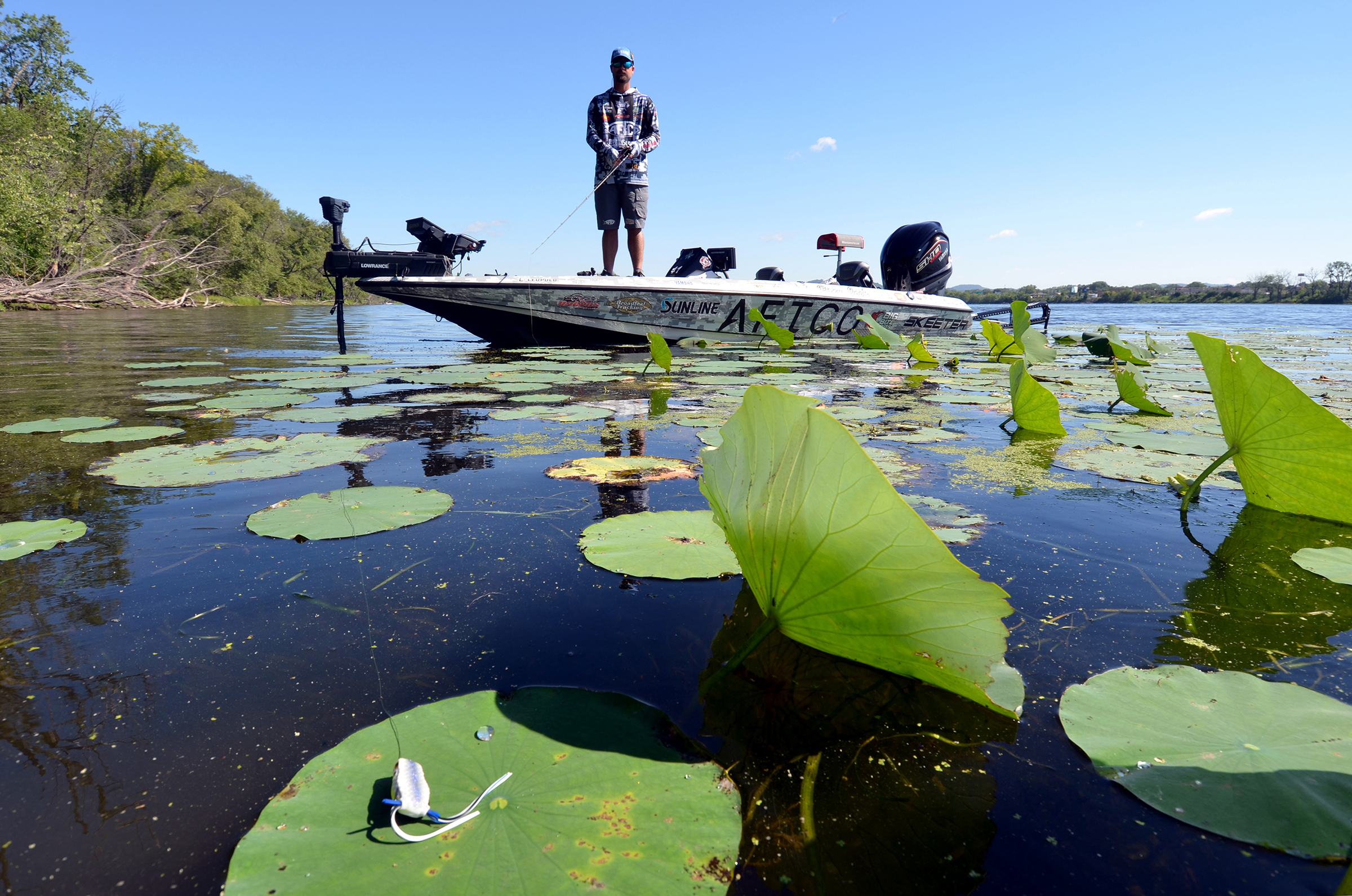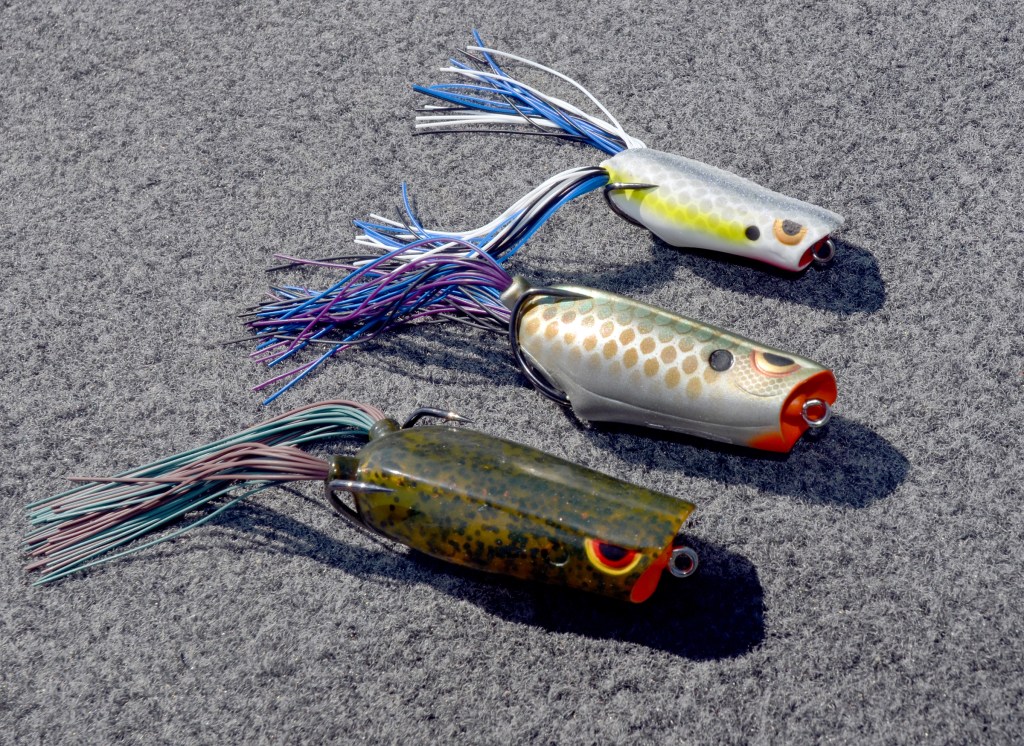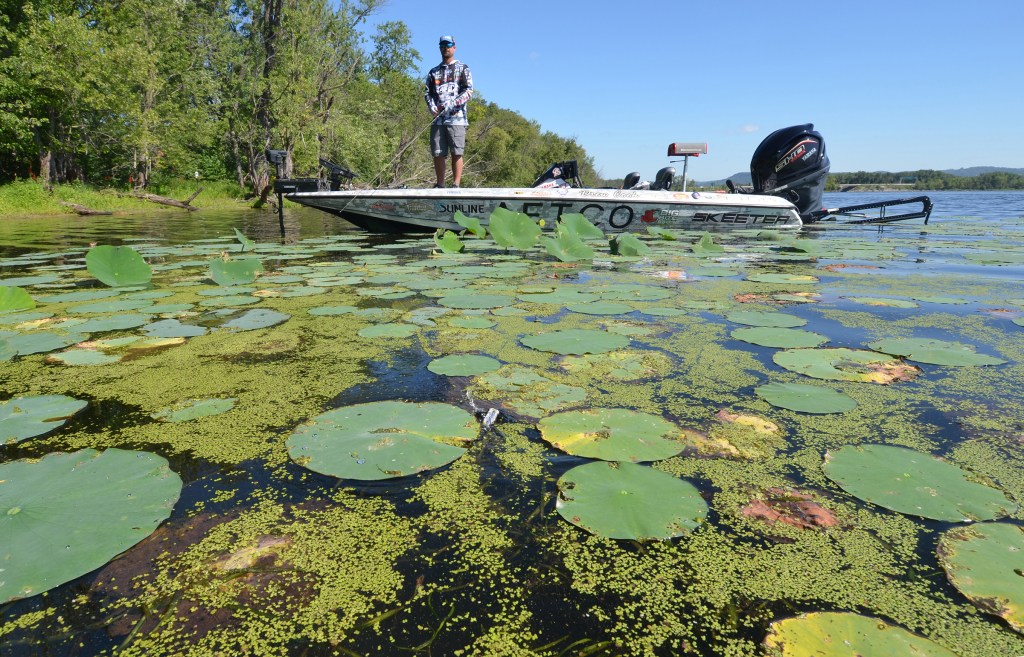
When Florida Bassmaster Elite Series pro Drew Cook fishes thick grass mats covered with slimy algae, aka cheese, he tempts bites with a weedless frog. A frog’s pointed nose allows it to slide cleanly over the gunk. But three Spro Bronzeye Poppin’ Frogs handle his froggin’ duties about everywhere else.
“I definitely use a popping frog more often,” Cook said. “Its cupped face sprays water. That gives it more calling power than a regular frog.”
He fishes popping frogs spring through fall in a variety of situations, including working them over thin grass mats that are void of cheese. He also skips them under docks and slings them under overhangs.
“In rivers I’ll throw a frog right up on the shoreline and work it into the water,” Cook said. “That puts the frog right in the strike zone because river bass will pin baitfish against the bank to catch them.”

The cutest of the three weedless poppers is the size 50 Baby Poppin’ Frog, which is 2 inches long and weighs 1/4 ounce. Cook opts for the whitish Nasty Shad color during the shad spawn and whenever bass are feeding on shad and similar baitfish.
“The Baby Poppin’ Frog has been a game changer during the shad spawn on my home lake,” Cook said. “The shad are really small then. I used to throw 1/8-ounce buzzbaits and bitty, soft jerkbaits to get bites. Now I can fish that little frog on braid and horse them in.”
On tidal rivers and other fisheries where limits of “keeper” bass are the norm, the little popper puts more fish in his livewell than the larger sizes. It has been a player for him on the Sabine River and Winyah Bay. Then again, the downsized bait also appeals to heavy bass, Cook added.
To cast and work the little popper with utmost efficiency, Cook matches it with lighter tackle than he employs with larger frogs. The heart of the combo is a 7-foot, medium-heavy, Dobyns 703 Champion XP casting rod. He matches it with a high speed reel spooled with 40-pound Sunline SX1 Braided Line.
Bigger pops
The two other baits in Cook’s triple popper treat are the original size 60 Bronzeye Poppin’ Frog in two colors. He opts for Green Pumpkin to mimic frogs and bluegills. If sizeable shad are also on the menu, he goes with Killer Gill, which is “green-pumpkinish” on top with a silver belly.
The tackle he uses with size 60 frogs varies, depending on the cover he is fishing. When skipping under docks and casting to riverbanks, he relies on a 7-3 heavy action, Dobyns XP 734 casting rod and 50-pound braid. For pads and other stubborn vegetation, he steps up to a 7-3, heavy extra-fast action, Dobyns 736 and 60-pound braid.
“In stubborn stuff like gator grass you have to pull the plant up pretty much to get the fish in,” Cook said.
Action
When shad are spawning and when bass are feeding on small baitfish, Cook retrieves the Baby Poppin’ Frog with continuous, quick staccato twitches. He also does this with all three frogs when he wants to cover water quickly while searching for bass.
In most other situations he casts to specific targets, waits for the ripples to settle and then moves the bait ahead with one to three soft pops between pauses. Most strike happen as soon as the frog hits the water or when you pop the frog after letting it sit there, Cook advised.
Fisheries that yield good numbers of bass weighing 3 pounds or more prompt Cook to fish the size 60 Poppin’ Frogs. But he always has both sizes rigged and ready to go. If a bass misses the larger popping frog, he follows up with the smaller one.
Although the Baby Poppin’ Frog has smaller hooks than the larger sizes, Cook claimed that you own the bass once you hook it. However, he warns against boat-flipping lunkers with it.

Don’t boat flip when you see this
“If you hook a big bass on a frog and you can’t see the bait, don’t try to boat-flip it,” Cook warns. “When a bass chokes a frog, the hooks are stuck in the soft part of its mouth. They’ll rip out when you lift the bass out of the water. The hooks are usually in a hard part of the fish’s mouth when you can see the frog. That’s when you can consider boat-flipping the bass.





